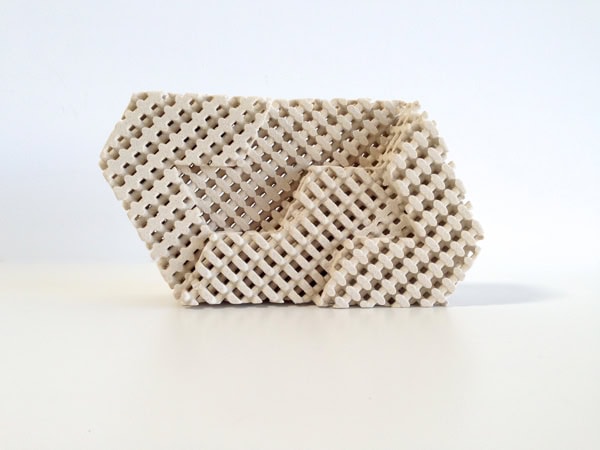
[Image above] Credit: Emerging Objects
Late last year, fellow editor April declared 3-D printing one of five materials science wonders to watch in 2015. And, just as expected, she was right on. The only thing surprising about Dr. Gocha’s predictive post? That a story about 3-D printing has yet to appear on the CTT blog in 2015—until now.
Enter Emerging Objects’ Cool Brick.
The system that serves as inspiration for their 3-D printed ceramic brick isn’t new, but the technology that perfects it certainly is.
Much like the Cold Pot I covered last April, the company’s oh-so-cool Cool Brick uses evaporative cooling to reduce air temperatures.
Evaporative cooling has been used since at least 2500 BC, when ancient civilizations were using vessels of water to keep rooms cool. It’s well-suited for hot, low-humidity climates and costs far less than refrigerated air conditioning—as much as 80% less.
According to Emerging Objects’ website, Cool Brick designers Virginia San Fratello and Ronald Rael were inspired by the Muscatese Evaporative cooling window—part wood screen, part water-filled ceramic vessel—illustrated below.

Credit: Emerging Objects
Comprised of 3-D printed porous ceramic bricks set in mortar, each brick absorbs water like a sponge and is designed as a three dimensional lattice that allows air to pass through the wall. As air moves through the 3-D printed brick, the water that is held in the micropores of the ceramic evaporates, bringing cool air into an interior environment, lowering the temperature using the principle of evaporative cooling. The bricks are modular and interlocking and can be stacked together to make a screen. The 3-D lattice creates a strong bond when set in mortar. The shape of the brick also creates a shaded surface on the wall to keep a large percentage of the wall’s surface cool and protected from the sun to improve the wall’s performance.

Credit: Emerging Objects
Though there isn’t any mention of plans to offer the technology to the public just yet, if you’re in San Francisco, you can see it for yourself now.
Cool Brick is part of the San Francisco Museum of Craft and Design’s Data Clay: Digital Strategies for Parsing the Earth—“the first public exhibition to present the growing movement of architects, artists, and designers exploring the medium of ceramics coupled with digital technologies”—which can be viewed through April 19.
ACerS Corporate Member Tethon 3D sponsored the Cool Brick project.
For some additional reading, check out these super-strong microlattices developed at Lawrence Livermore National Laboratory that can hold 10,000 times their own weight.

Credit: Emerging Objects

Credit: Emerging Objects

Credit: Emerging Objects

Credit: Emerging Objects
Author
Jessica McMathis
CTT Categories
- Construction
- Energy
- Environment
- Material Innovations


